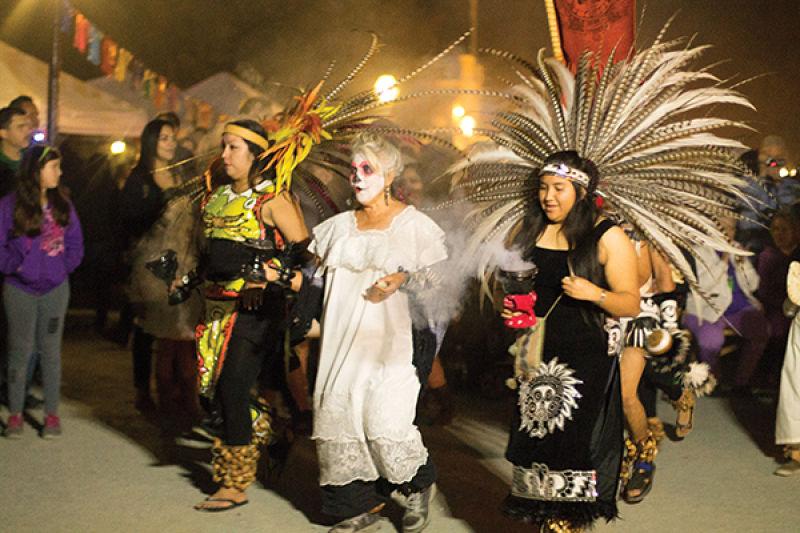Old Sac celebrates Dia de los Muertos
November 6, 2013
Old Sacramento hosted Day of the Dead: Souls of the City, a public celebration of Dia De Los Muertos, on Nov. 1 in order to give people a chance to see what the Mexican holiday is all about.
Dia De Los Muertos is a commemoration loved ones and ancestors that predates Colonial times, tracing as far back as 3,500 years ago.
The holiday tradition includes using altars decorated with names and pictures, personal effects of those lost, sugar skulls and a procession to call the spirits. Marigold flowers are a key part of decoration, as they memorialize the dead.
Lupe Trevizo, who works with the California Mexican American Veterans Memorial, made her own altar dedicated to war veterans, decorating it with pictures and personal items.
“It’s Mexican culture, tradition and spirituality,” Trevizo said. “The altars pays homage and remembrance to loved ones, we bring their favorite food and drink to commemorate the spirits.”
The altars do much more than commemorate the dead though, According to tradition, they hold a powerful spiritual medium.
“The aroma of the marigolds welcomes the spirits,” Trevizo said. “You arrange your altar so its recognized by spirits and family.”
Another integral part of the celebration is the skull, which can be made of paper mache, sugar, or even real skulls. Activities during this holiday include decorating the skulls, which when made of sugar can be eaten. For the most part, the skulls are made for decorating the altars.
Dominic Porras, a filmmaker for the arts education center Sol Collective, said the purpose of the skull is to represent something that is a part of everyone.
“We acknowledge the skull because that is what we all share, what we are given,” Porras said. “Decorating it gives it personality.”
Porras said he believes that being able to hold the event in Old Sacramento has been a great way to inform the public of this sacred Mexican tradition and hopes that it was an eye-opener for those who don’t know much about the customs of the holiday.
“The lovely part of this ceremony is doing it in public. For so long we’ve done this behind the scenes,” Porras said. “In Mexico, we can celebrate up to a month long, it’s a good time to get everyone together and see what it’s all about.”
Along with informing the general public about the holiday, Old Sacramento also included the procession the part of the celebration that includes many people decorating themselves in traditional garb, calling to the spirits through dance and instruments.
“The procession calls our ancestors from the past,” Porras said. “There’s a lot of souls here in Old Sacramento, whether it’s gold miners, Mexicans or Chinese, a lot of blood was shed here.”
While some may think that dressing up as the dead may be morbid, Alejandra Fernandez-Garcia, a junior sociology and ethnic studies major, finds solace in dressing up.
“I’m commemorating, honoring, and celebrating my loved ones and ancestors,” Fernandez-Garcia said. “Being able to celebrate the duality of life and death is important to help loved ones heal, it kind of takes the edge off.”
Kaitlin Bruce can be reached at [email protected]





























































































































